May 27, 2022
I’m still thinking about cowbirds and adoption. I spent the past week in Mountainaire near Flagstaff with the kids and grandkids, remodeling the Middle Daughter’s mudroom into a library and study, with the help of Giavanna and Zion.
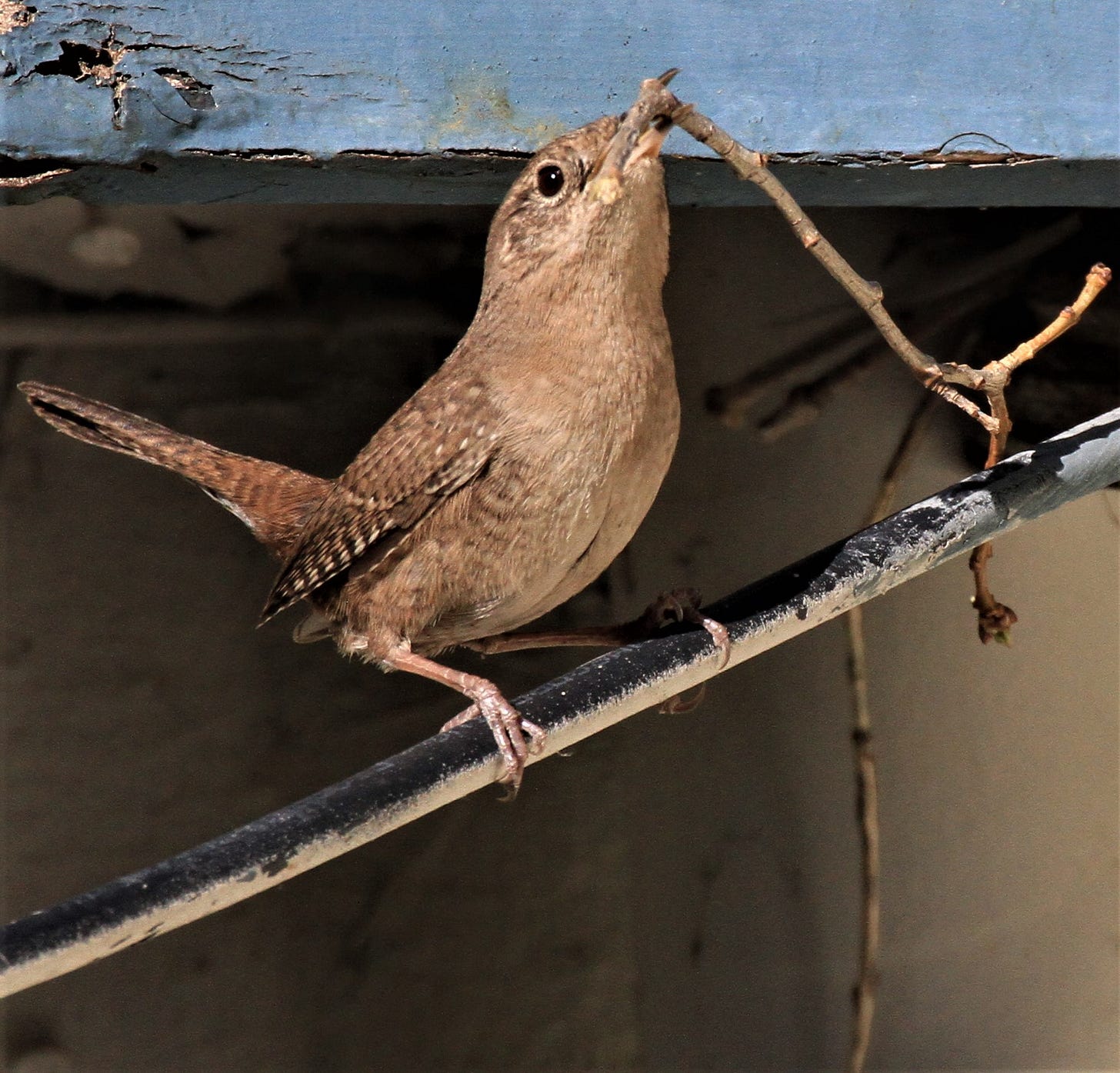
Mornings were for the birds. Wilson’s and Townsend’s and Grace’s warblers needling the pine and aspen for insects. White-breasted and those darling pygmy nuthatches probing the feeders for sunflower seeds. House wrens setting up house in the eaves of the house.
But it was the grandchildren and the brown-headed cowbirds that kept my mind on adoption as one way that nature expresses herself.
As I mentioned in my last post, cowbirds are brood parasites, laying eggs in the nests of other “host” birds, which then raise cowbird young along with their own chicks. Cowbirds seem to prefer hooded warblers, sometimes even filling an empty nest with eggs, which the warbler couple “adopts” as its own.
Black swans are also known to adopt. These long-necked, red-billed, black-feathered Australian cobs make awesome parents. Sometimes, one swan of a monogamous couple will seduce an outside female, construct a nest with her, and then drive her away once she's laid a clutch of eggs, whereupon the monogamous pair then raises the cygnets as their own. In other cases, a pair may chase other swans off their nest, incubate their eggs, and care for the adopted chicks.
Similarly, graylag geese remain committed to each other their entire lives, recoupling only after the death of a partner. Occasionally, the pair will allow a female to join them, and the trio will raise a clutch of goslings.
Penguins have a history of stealing eggs or chicks from other penguins to raise offspring of their own. Researchers have observed this among king, gentoo, and adélie penguins.
Laysan albatrosses, giant gull-like birds with the wingspan of a pterosaur (almost seven feet) that spend most of their lives at sea, are known to be devoted parents. Thirty-one percent of pairs at Kaʻena Point, the northwestern tip of Oahu, Hawaii, are female-female. They are monogamous for life, “borrowing” males to mate with but laying eggs in a nest shared with a female partner. It takes two to successfully raise an albatross chick. Any two.
Black swans, graylag geese, king, gentoo, and adélie penguins, and Laysan albatrosses—the one thing all these adoptive parents have in common is they’re all the same sex.
Hooded warblers too. I won’t find swans or penguins or albatrosses in my yard, but hooded warblers have visited twice. Male pairs of hooded warblers not only adopt and raise whole nests of cowbird chicks, these same-sex couples may take over the care of abandoned nests after cowbirds or predators like blue jays or squirrels disturb them. The males divide parenting duties. One repairs the nest and broods the eggs and young, while the other defends the territory. He also feeds his mate—which is rare among hooded warbler pairs of the opposite sex.
In fact, my yard may revel in some of wildest expressions of nature. Male brown-headed cowbirds are known to mate with male house sparrows, the cowbird employing the characteristic “head-down posture” with raised wings while nudging the sparrow until he mounts. Male eastern bluebirds form pair-bonds, traveling together, inspecting nest sites, and courting each other with husky whistles and gifts of cutworms. Male Anna’s hummingbirds court and mount both females and other males, performing steep dives that end with a shrill, metallic squeal inches above their intended mate. Female common ravens engage in intense courtship with each other (sometimes simultaneously bonded with males), exhibiting mutual preening and ritualized feeding.
And then there are the acorn woodpeckers with their extraordinary and complex social lives that include mate sharing and group sex. While some populations are simply monogamous, many others live in family groups with breeding males and females and nonbreeding birds that share in parenting. This mating system is called polygynandry, meaning one male mates and bonds with several females and one female mates and bonds with several males. But acorn woodpeckers are also bisexual. Same-sex mounting among males and among females is a regular, even daily and year-long, feature for these cooperatively breeding woodpeckers.
There’s nothing abnormal, weird, or accidental in nature. Nature, so multifaceted and wondrous, will try anything: LGBTQ+++, intelligence (probably a dead end there), even, as in the case of hooded warblers, gay adoption.
We may think our human ventures are novel and all our own, like my love for cowbirds. But nature has already been there.
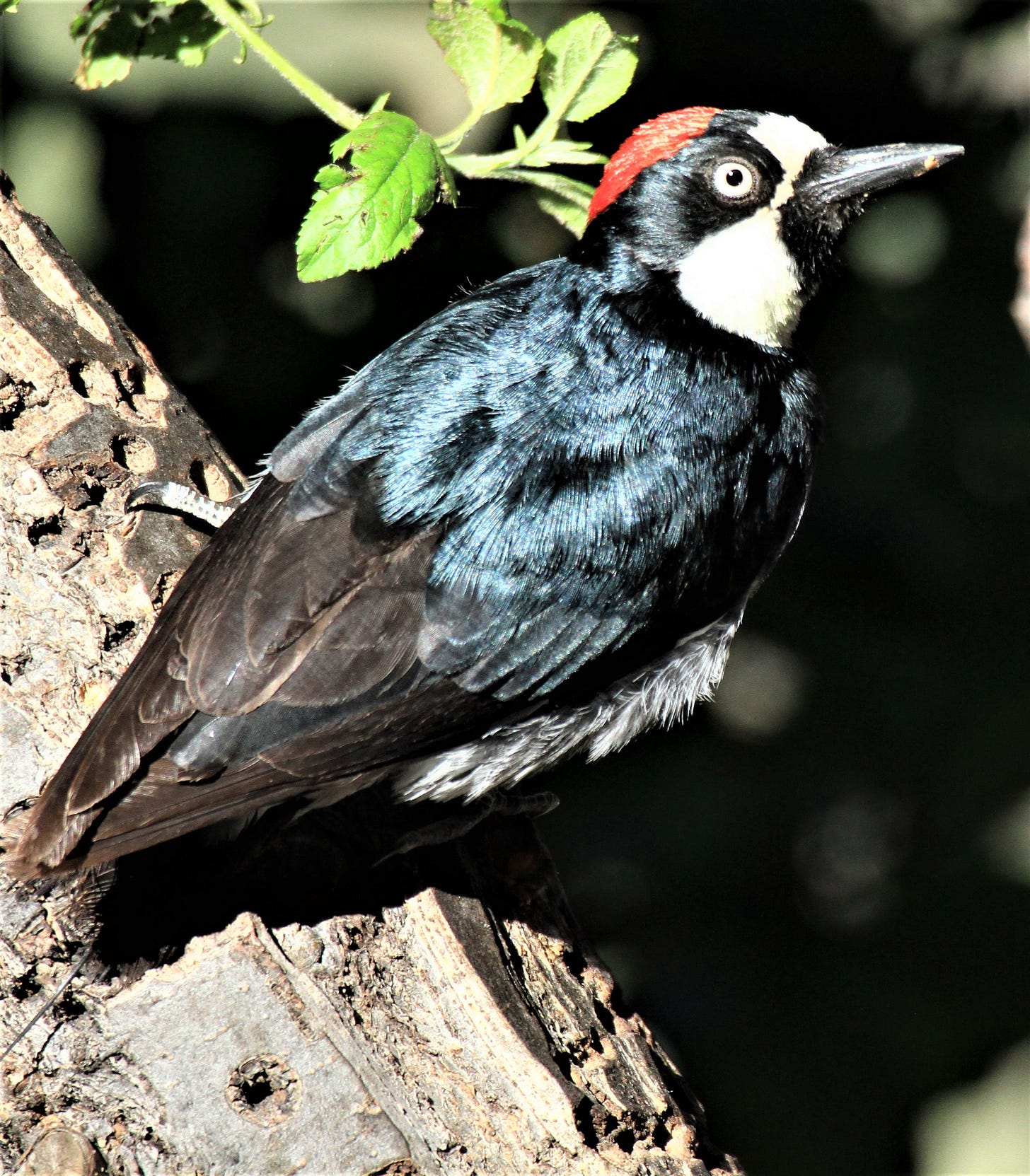
In his 1999 seminal tome, Biological Exuberance, Canadian biologist Bruce Bagemihl says, “Homosexual behavior occurs in more than 450 different kinds of animals worldwide and is found in every major geographic region and every major animal group.”
Much of this post is drawn from his book.
Thanks for subscribing!
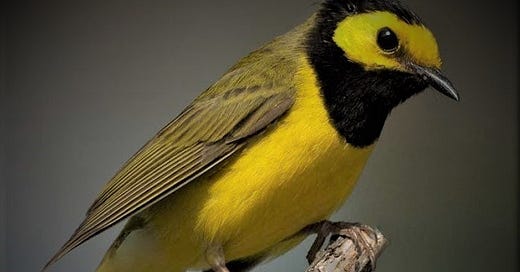




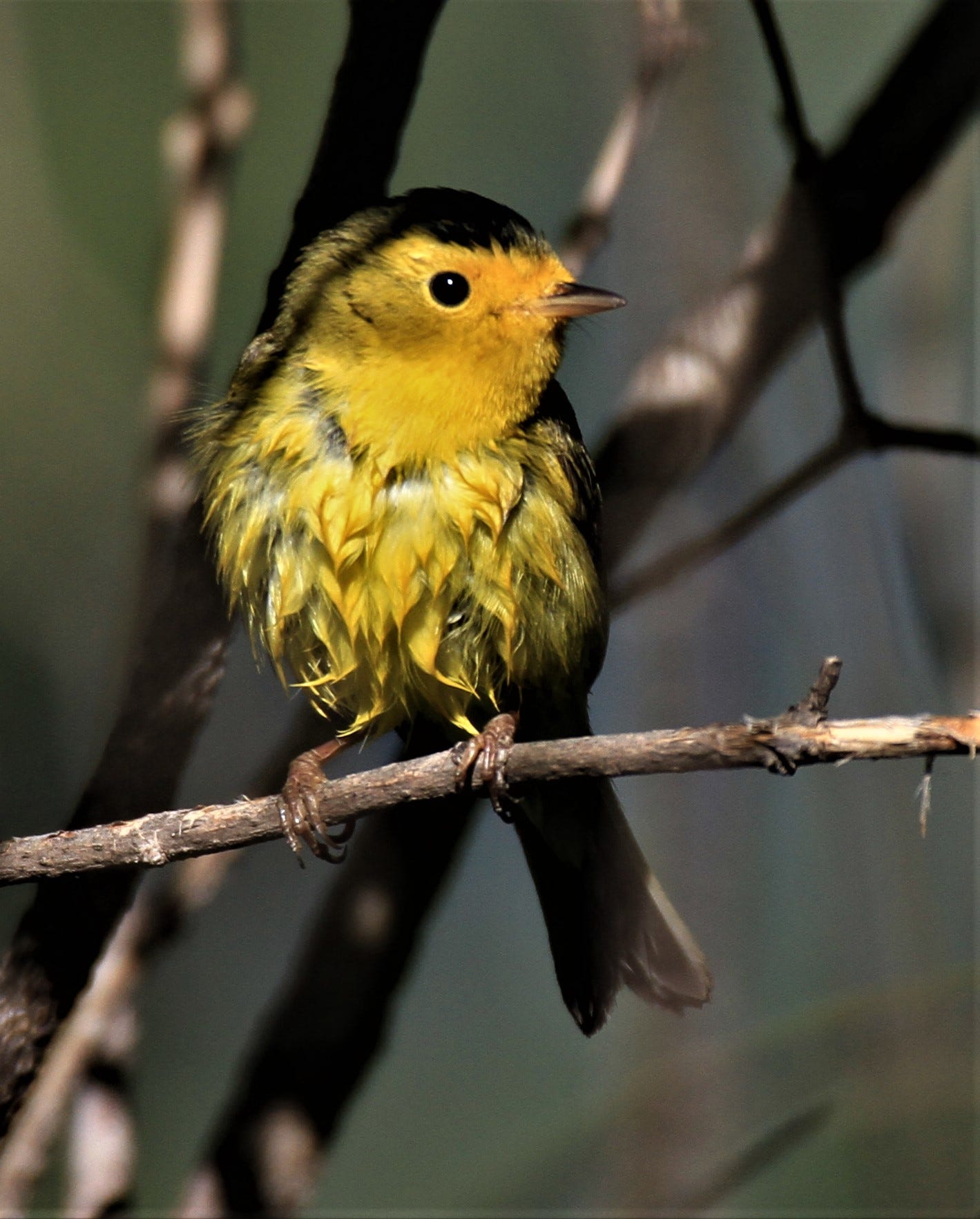
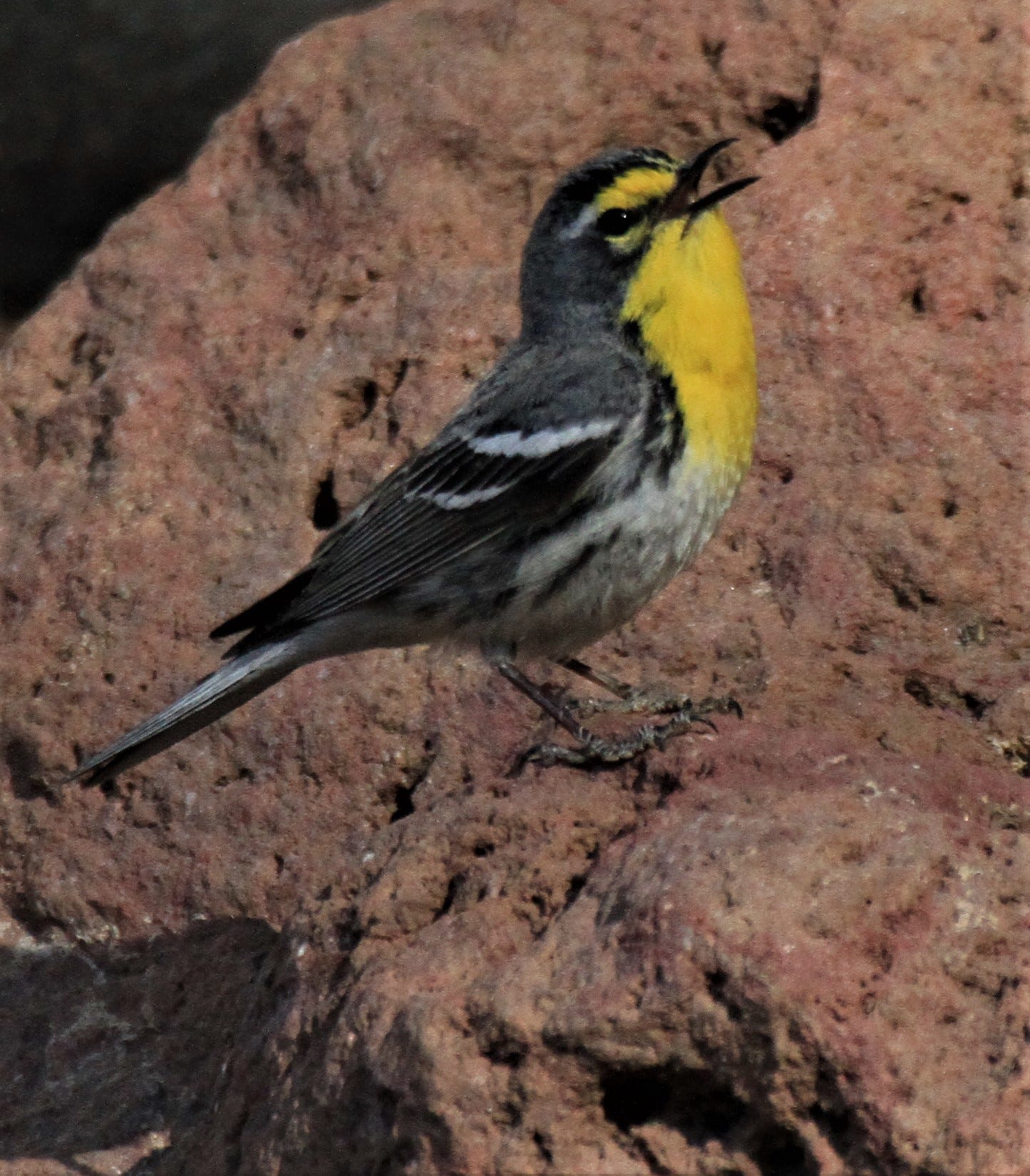
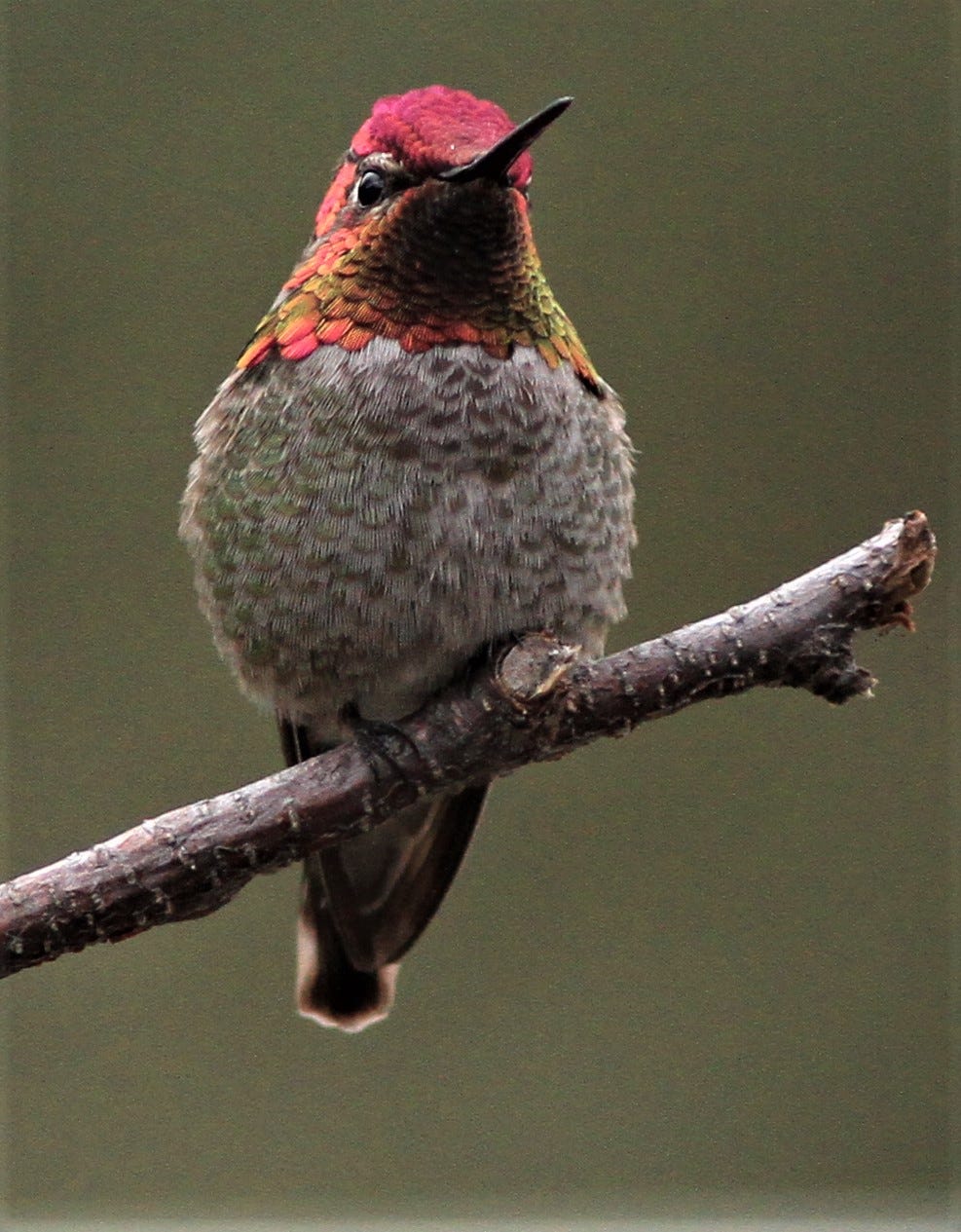
Brilliant Ken loving the info and world of these birds.
Wow, a lot I did not know!